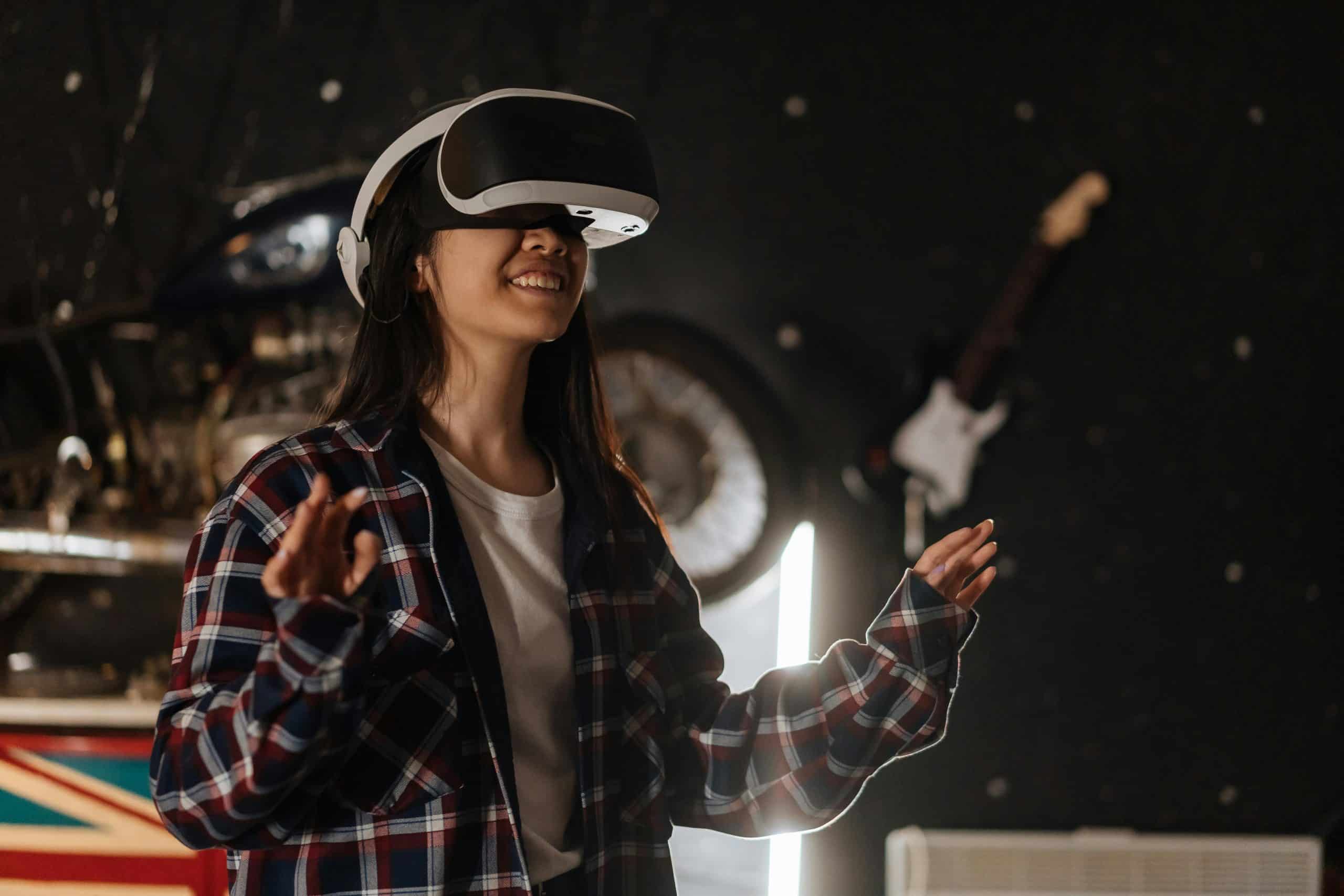How to Develop a Public Speaking Program Using Virtual Reality Simulations?

In this modernized and highly digital era, traditional ways of training are gradually stepping aside to give way to innovative and interactive methods. One such method is using virtual reality (VR) simulations. This article will discuss how you can harness the power of VR to develop an effective public speaking program. The focus is on using VR simulations to enhance public speaking skills, manage speech anxiety, provide real-time feedback, and create a realistic practicing environment. Bear in mind that this is not some futuristic idea, but a practical solution, already being adopted by schools, businesses, and organizations worldwide.
Introducing Public Speaking in Virtual Reality
Public speaking is a commonly dreaded task. The fear of facing an audience, the anxiety of forgetting your lines, or the concern of not being persuasive enough, are all factors that can impede performance. However, speaking in public is a crucial skill in many professions and can significantly impact a person’s career growth and personal development.
Also to read : What’s the Latest in Smart Grid Technology for Renewable Energy Integration?
Traditionally, public speaking training involves in-person sessions, group practices, and feedback sessions. However, the advent of VR has revolutionized this process. Virtual reality, in essence, is a computer-generated simulation of a real-life environment or situation. It immerses the user by stimulating their vision and hearing. Therefore, public speaking in virtual reality allows the speaker to practice in a simulated environment that mirrors the reality of a public speaking scenario. The key advantage here being that the speaker can practice in a safe environment, free from real-world judgment and repercussions.
Developing a VR-oriented Public Speaking Program
Embarking on the journey of creating a VR-based public speaking program may seem daunting, but the path is straightforward if broken down into manageable steps. The first call to action is understanding your audience, their needs, and their current skill level. This forms the foundational knowledge required to tailor a VR simulation that will meet their specific needs.
Additional reading : How to Create a Personalized Learning Experience with Adaptive Software?
The next step involves setting clear goals and objectives. These should be both short-term, like improving body language or reducing filler words, and long-term, such as managing speech anxiety or crafting compelling presentations. Remember, these goals must be achievable and measurable to ensure the program is effective.
The program then needs to be designed in a way that accommodates these goals. This usually involves creating various virtual environments, audiences, and scenarios that cater to different aspects of public speaking. For instance, a virtual boardroom can be used to practice professional presentations, while a virtual auditorium may be more suited for larger, more formal speeches.
Utilizing Feedback and Performance Analysis
Using VR technology for training gives a unique opportunity to provide real-time feedback and performance analysis. While practicing public speaking, the virtual reality software can track and analyze various aspects of the speaker’s performance. This can include vocal aspects such as volume, pace, and pitch, or visual aspects like body language and audience engagement.
This information can then be used to provide immediate feedback to the speaker. For example, if the software detects the speaker is speaking too quickly, it can prompt them to slow down. This instantaneous feedback allows the speaker to correct their behavior in real time, reinforcing good habits and addressing issues as they arise.
Providing a Safe Environment for Practice
One of the most significant benefits of using VR for public speaking is providing a safe and controlled environment for practice. The fear of judgment and failure can be a major roadblock for many people when learning public speaking. However, a virtual environment allows for error and experimentation without the same risks associated with a real audience.
In a VR simulation, a speaker can practice their speech as many times as they need, adjusting and refining their style until they’re comfortable. They can face their fears and anxieties in a controlled environment, allowing them to focus on their skills and performance rather than the audience’s reaction.
Encouraging Continued Practice and Improvement
A successful public speaking program promotes continuous practice and improvement. The flexible nature of VR enables users to practice at their own pace, using the simulations as often as needed. This fosters an environment of continuous learning and development, where speakers are encouraged to refine their skills regularly.
Moreover, the simulations can be updated and adapted to keep up with the speaker’s improving skills. As the speaker becomes more comfortable with simple presentations, the simulations can be made more challenging by adjusting the audience’s size or reactions, introducing distractions, or changing the environment.
In conclusion, virtual reality offers an exciting and effective way to improve public speaking skills. By creating an immersive, realistic, and safe environment for practice, and providing real-time feedback, VR simulations can significantly enhance the public speaking training process. Remember, the key to successful public speaking is practice, and what better way to practice than in a risk-free, realistic simulation.
Enhancing Presentation Skills Through VR
Presentation skills are crucial in public speaking. They are the driving force behind the delivery of your content. These skills include body language, eye contact, the use of visuals, and overall stage presence. Traditional training methods for these skills have consisted of video recording and reviewing, with critiques and suggestions given after completion. Although these methods have proven effective over time, they lack the interactivity and real-time feedback that VR simulations can provide.
In a VR-based public speaking program, a speaker can work on their presentation skills in a more interactive and dynamic way. They can practice maintaining eye contact with a virtual audience, learn to use their body language effectively, and explore how to use visuals in a speech. The advantage of VR is that it allows for an immersive experience, letting the speaker feel like they’re actually in a real-life environment.
For instance, using VR, the speaker can practice their presentation in front of a virtual audience that reacts to their speech. They can see when the audience is engaged or when they seem bored or confused. This allows the speaker to adjust their delivery in real-time, a feature that’s not possible with traditional training methods. Moreover, the speaker can record their performance and review it later for self-assessment or receive feedback from mentors or peers.
Overcoming Speaking Anxiety with Virtual Reality
Speaking anxiety is a common issue faced by many individuals when they have to speak in front of an audience. This anxiety can affect the speaker’s performance, causing them to forget their lines, stutter, or even freeze on stage. Traditional training methods try to overcome this issue by exposing the speaker to similar situations gradually. However, this can be a slow and stressful process.
Virtual reality offers a much more effective solution. VR simulations can replicate the exact conditions of a public speaking event, allowing the speaker to practice in a virtual environment that mimics the real situation. This provides a safe space for the speaker to face their fears and overcome their anxiety, without the stress of a real audience.
Imagine being able to step onto a virtual stage, look out at a virtual crowd, and deliver your speech as many times as you need until you feel comfortable. You can adjust the size of the audience, their reactions, and the environment to gradually build up your confidence. The more you practice in this safe and controlled environment, the better prepared you will be for the real thing.
Conclusion: Embrace the Power of VR for Public Speaking
In this digital age, the way we learn and improve our skills is continually evolving. The use of VR in public speaking training is a testament to this evolution. It offers an innovative, immersive, and effective method for individuals to enhance their speaking skills, manage their speaking anxiety, and gain real-time feedback.
Through VR, a speaker can practice in a realistic environment, free from real-world judgment and repercussions, making it an ideal tool for those intimidated by public speaking. Furthermore, the use of VR fosters continuous learning and improvement, encouraging speakers to practice and refine their skills regularly.
The power of virtual reality in public speaking training is undeniable. It’s not just about using a cool piece of technology; it’s about harnessing the capabilities of this technology to become a better, more confident speaker. So whether you’re a seasoned orator or a novice presenter, consider incorporating virtual reality into your public speaking training. It’s time to embrace the future of learning and communication. Remember, the key to overcoming the fear of public speaking lies in practice, and VR provides that practice in a realistic, safe, and innovative way.
